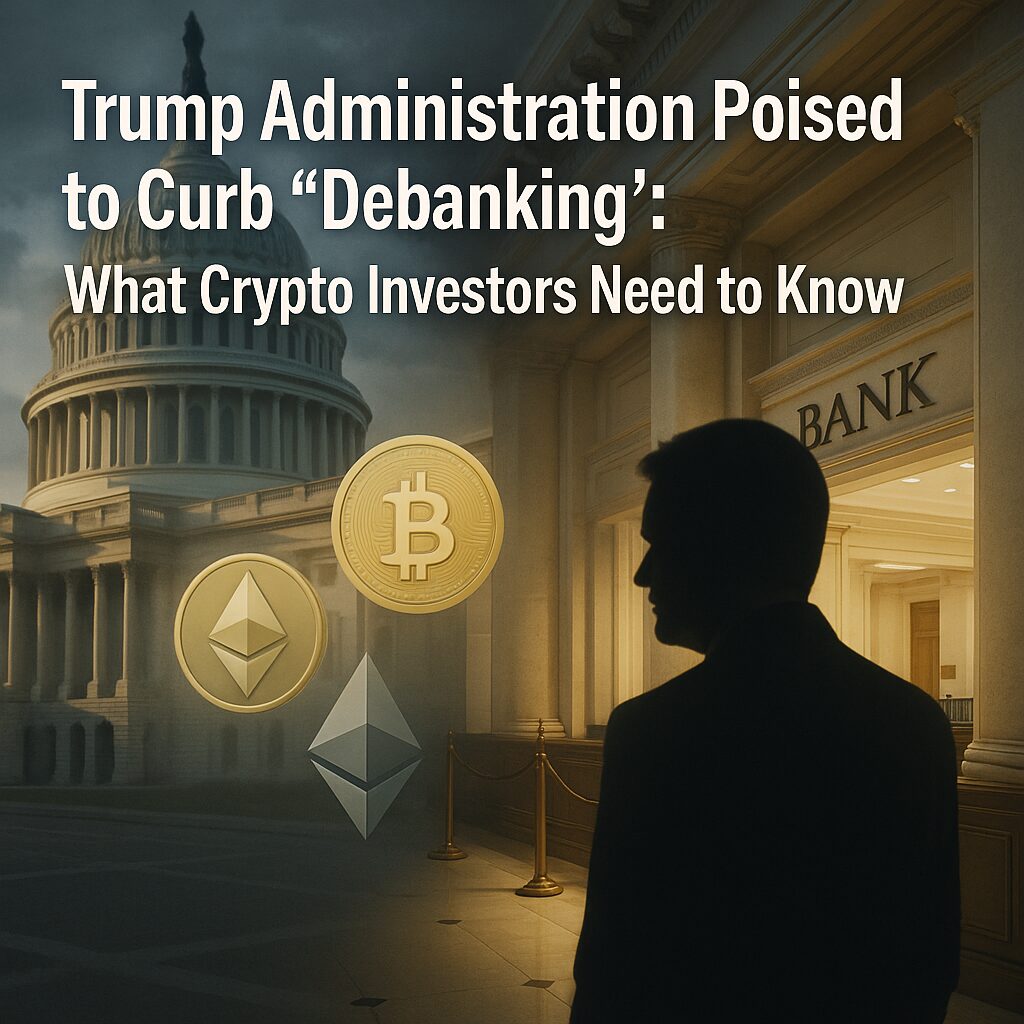
Main Points:
- Executive Order Under Consideration: The Trump administration is weighing an executive order to prevent banks from cutting off services, including to crypto firms, often called “debanking.”
- Historical Context: Triggered by the 2023 collapses of SVB, Silvergate, and Signature Bank—dubbed Operation Chokepoint 2.0 by industry observers.
- Political Pressure: Senator Elizabeth Warren and state officials in Texas and Oklahoma have challenged banks on perceived political or industry-based service denials.
- Industry Concerns: Crypto-friendly banks like Custodia Bank report multi-million-dollar delays due to repeated account-restriction campaigns.
- Timeline and Outlook: Debanking challenges may persist through 2026, pending Federal Reserve appointments and regulatory guidance reversals.
- Implications for Crypto Adoption: A successful order could restore banking access for startups but may face legal challenges and uneven state-level enforcement.
Background: The Emergence of “Debanking” Concerns
In March 2023, the crypto industry was rocked by the near-simultaneous failures of Silicon Valley Bank (SVB), the voluntary liquidation of Silvergate Bank, and the forced closure of Signature Bank by New York regulators. Crypto venture capitalist Nic Carter labeled this series of events “Operation Chokepoint 2.0,” suggesting a coordinated effort to squeeze digital-asset firms out of the banking system. The fallout left many startups scrambling for new payment rails or forced to rely on smaller, higher-risk institutions.
Timeline of Key Events:
Below is a visual timeline of these critical bank failures.
The Proposed Executive Order: Key Provisions and Goals
According to The Wall Street Journal, anonymous administration sources indicate that President Trump’s team is drafting an executive order aimed at protecting individuals and sectors—including political activists and crypto entrepreneurs—from arbitrary banking restrictions. The principal elements under discussion include:
- Mandating Equal Access: Federal regulators could compel banks to justify any decision to close or freeze accounts based on objective risk criteria rather than political or reputational judgments.
- Regulatory Oversight: The order may direct the Treasury, Federal Reserve (Fed), Office of the Comptroller of the Currency (OCC), and Federal Deposit Insurance Corporation (FDIC) to issue uniform guidance on non-discrimination in service provision.
- Cybersecurity Integration: Some drafts reportedly include measures to streamline or reverse certain cybersecurity directives from the Biden era, linking financial-service access to adherence to standardized IT-security frameworks.
Political and Regulatory Pressures
Major banks—JP Morgan Chase, Citigroup, and Wells Fargo—have met repeatedly with Texas and Oklahoma regulators to address accusations of refusing service to politically or industrially unpopular clients. In February 2025, Senator Elizabeth Warren publicly urged action against banking discrimination, stating:
“It doesn’t matter who you voted for or what you believe—no one should be arbitrarily denied access to their bank accounts or services.”
Simultaneously, GOP lawmakers including Senator Tim Scott have introduced legislation—the Financial Integrity and Regulation Management Act—to outlaw debanking practices and refocus regulators on banks’ financial health rather than clients’ reputations.
Industry Perspectives: Voices from Crypto and Beyond
Caitlin Long, founder and CEO of Custodia Bank, warned on the Chainreaction show that the battle isn’t over until Trump can appoint new Fed governors—likely January 2026. Even if OCC and FDIC reverse anti-crypto guidance, a resistant Fed could uphold restrictive stances, prolonging debanking issues. Custodia reportedly endured months of operational delays and “a couple of million dollars” (approx. $2–3 million USD) in lost revenue due to repeated account freezes.
Nic Carter argues that equal banking access is vital for innovation in digital finance. Without reliable banking partners, startups face higher costs, limited scale, and investor wariness.
Financial institutions, however, caution that anti-money-laundering (AML) requirements and reputational risk assessments are legitimate factors in banking decisions. They emphasize that uniform federal guidance must align with existing AML/CFT regulations to avoid unintended compliance gaps.
Looking Ahead: Risks and Opportunities for Crypto Investors
Should the executive order be signed, crypto firms may see swift relief: restored bank accounts, reduced compliance friction, and renewed investor confidence. However, potential challenges include:
- Legal Pushback: Banks or state regulators might challenge the order’s scope, citing separation of powers or fiduciary duties.
- Patchwork Enforcement: Differing state-level interpretations could lead to uneven application, particularly between conservative and progressive jurisdictions.
- Regulatory Uncertainty: Ongoing transitions at the Fed and OCC may delay uniform rulemaking, extending investors’ wait for clarity.
Despite these hurdles, a new governance framework could invite renewed institutional interest in blockchain pilots, stablecoin programs, and tokenized assets. For investors scouting emerging crypto projects, the prospect of restored banking relationships signals a more stable funding environment through 2026.
Conclusion
The Trump administration’s contemplated executive order on debanking represents a pivotal moment for the crypto ecosystem. By striving to codify non-discriminatory banking access, the order seeks to reverse what many view as politically motivated or risk-averse exclusions. Yet, its ultimate efficacy hinges on coherent federal-agency coordination, legal resilience, and the pace of Fed appointments post-January 2026. Crypto innovators and investors should monitor these developments closely: a clear victory could reduce operational costs and catalyze new blockchain-based ventures, while legal or regulatory delays may prolong the industry’s search for dependable banking partnerships.

